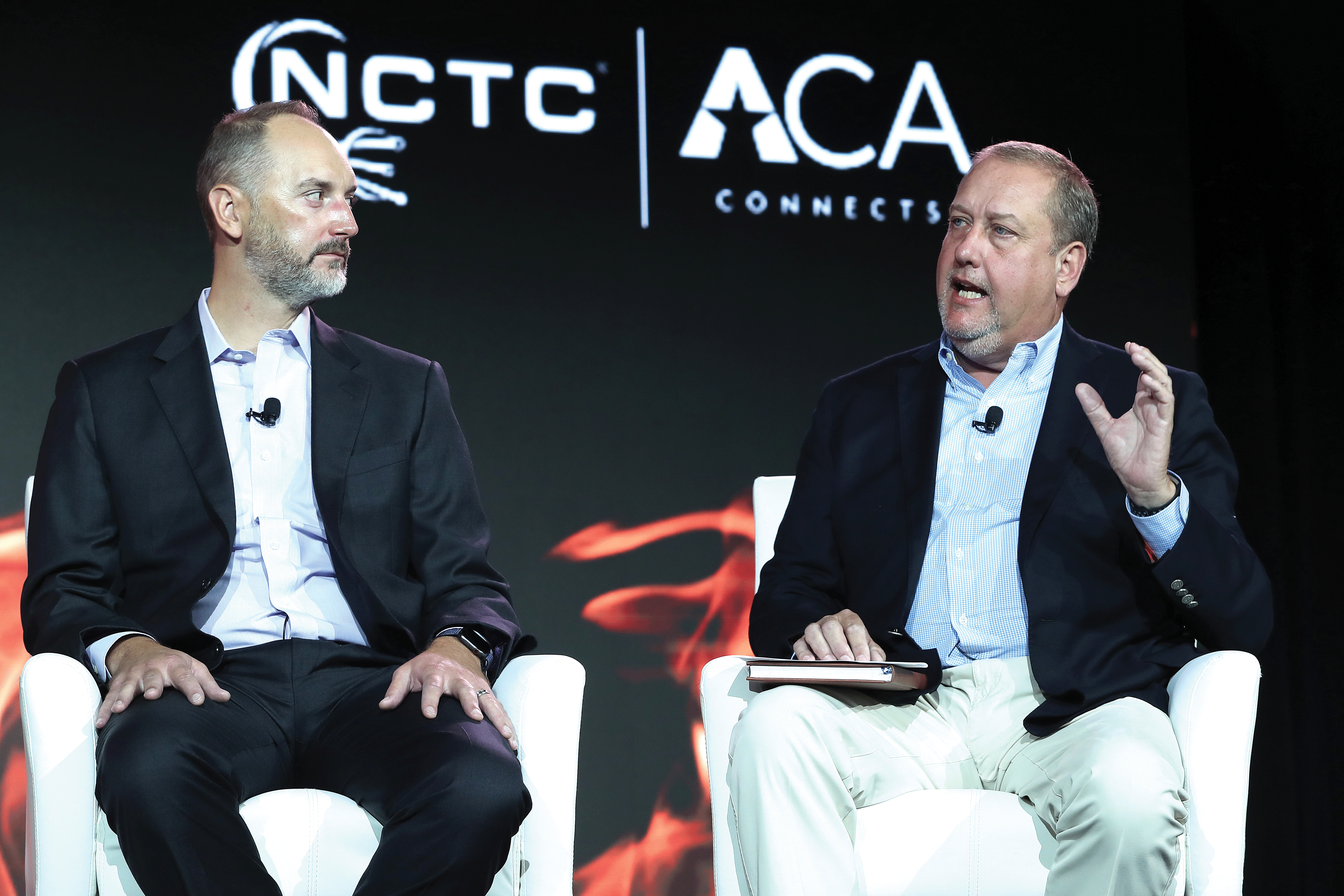TIS 2019: Rural Broadband Is Still Hot, Says Panel
CHICAGO — Bridging the digital divide in small rural communities is still a top priority and one that can help operators drive sales growth even as video customers dwindle, a panel of top small cable CEOs said at The Independent Show’s Opening General Session.
“Providing that local connection, and not just driving the content of those customers, [is critical],” said Buckeye Broadband president and general manager Geoff Shook at the session titled Hot Topics, Cool Leaders. “Owning that relationship from the edge of the end user’s device all the way through the businesses.”

MCTV president Katherine Gessner added that just providing the service isn’t enough for success. Education is a key part of the puzzle.
Gessner told the audience that in MCTV’s initial moves to convert some newly acquired customers from fairly antiquated systems to fiber-to-the home, they were reluctant to switch, even though converting meant they would get data speeds four times faster than their old DSL service.
“They didn’t understand what you could do with it [higher speeds],” Gessner said. “We found out there was a waiting list for DSL. They didn’t want to switch because they were scared that if our service didn’t work they couldn’t go back.”
For Schurz Communications, president and CEO Todd Schurz said one solution has been to partner with other providers in building out broadband networks. Schurz is currently working with local governments, using some state grants in Vermont and Minnesota, working with telephone co-ops in Iowa, electric co-ops in Minnesota, and Native American nations in Minnesota and Arizona.
“What we have found, all of these are structured differently, there’s no one model that fits everything,” Schurz said. “But it’s something that everybody realizes they need to do.”
Multichannel Newsletter
The smarter way to stay on top of the multichannel video marketplace. Sign up below.
“If you can go to some of these local entities and say, ‘You don’t have to build a digital headend, you don’t have to worry about all of that infrastructure, and you can put your resources into upgrading the local network, and we will then take the handoff,’ that seems to work pretty well,” he said.
As the industry moves closer toward 5G wireless services, smaller operators are helping to lead the way. At Shentel, executive VP and chief operating officer David Heimbach said that while his company is moving forward on wireline initiatives like DOCSIS
3.1 — which should be completed by the end of the year — they are also making inroads with 5G.
Heimbach said Shentel is currently trialing a 5G service, but there is still plenty of time before that service becomes essential. Of the 5 billion discrete wireless customers worldwide, he said, only one-third are on a 4G network and only 15% of mobile customers are expected to have 5G by 2025.
“This has a long tail on it,” Heimbach said.
But small operators are forging ahead, building out their networks and providing state-of-the-art service to customers, largely funded by their own coffers.
Gessner said that although MCTV did look into obtaining federal grants to build its fiber network, it didn’t make sense in the long run. MCTV began overbuilding its network with fiber to the home in 2014 or 2015 and last year began acquiring a few small properties near its traditional territory. The upgrades have resulted in strong broadband growth, she said.
“We shut off the analog plant in the first system in November and went from 0% internet penetration to about 20% in about seven months,” Gessner said. “It really opened our eyes to the need for rural broadband.”
